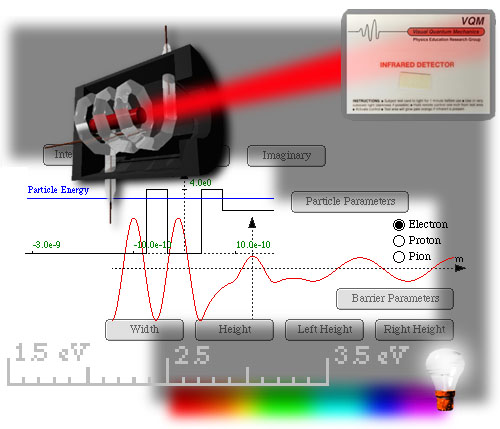
Visual
Quantum Mechanics
Educational Research
& Development for
Teaching Quantum Physics to
Non-science and Science Students
The instructional materials described below were created for students with limited experience in either physics or mathematics. PDF files for most of these lessons are available on this VQM web site.Visual Quantum Mechanics Home
- Solids and Light
- Using the light emitted from solids and gases this unit helps students understand why the energy in atoms is quantized and some of the consequences of that quantization as seen in everyday devices such as the light emitting diode. Prerequisite: Knowledge of Conservation of Energy
- Luminescence
- Energy quantization is applied to luminescent materials such as light sticks, glow-in-the-dark toys and infrared detectors. Students see how they can build energy level models to explain a variety of different light emitting processes. Prerequisite: A knowledge of conservation of energy & potential energy diagrams.
- Waves of Matter
- Students explore qualitatively the wave behavior of matter with visualization activities. They examine applications of quantum physics to devices ranging from the electron microscope to the Star Trek Transporter. Prerequisite: A knowledge of wave motion.
- Quantum Tunneling
- Students focus on the scanning tunneling microscope (STM) to qualitatively introduce them to quantum tunneling. The STM operation is simulated using a computer program that displays its relation to quantum tunneling. Prerequisite: Completion of The Waves of Matter.
- Potential Energy Diagrams
- Graphical displays of energy vs. distance play an important role in either a qualitative or quantitative understanding of quantum mechanics. This unit provides the students with some experiences in classical physics that help them understand the meaning of these energy diagrams. Prerequisite: A knowledge of conservation of energy.
- Making Waves
- A qualitative understanding of wave motion with emphasis on interference is important for studying The Waves of Matter. For students who have not studied waves this unit provides an introduction to only those concepts needed for Visual Quantum Mechanics.
 Supported by a National Science Foundation
Supported by a National Science Foundation